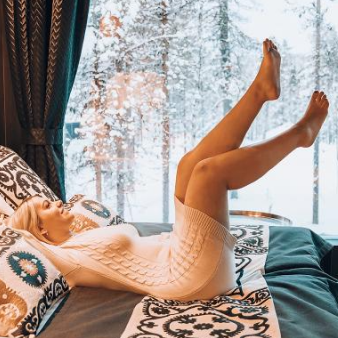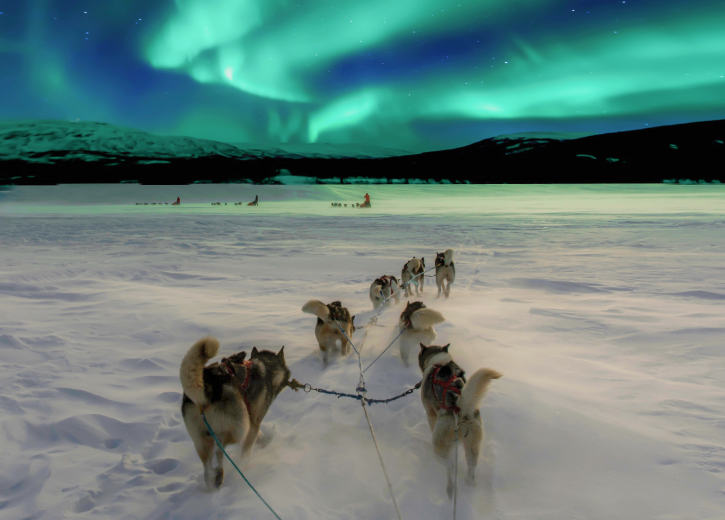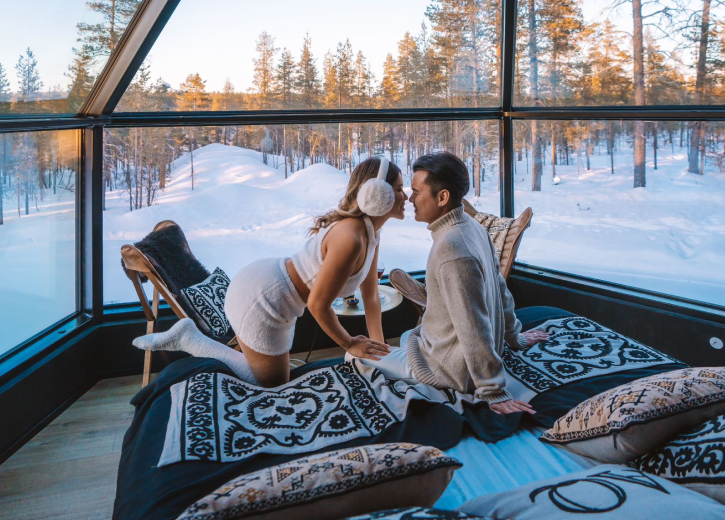The best time to see the northern lights in Finland is between September and March, with peak visibility occurring from December to February. This winter period offers optimal viewing conditions due to Finland’s extended hours of darkness, especially north of the Arctic Circle where polar nights create ideal viewing opportunities. For the highest chances of witnessing this natural spectacle, plan a stay of at least 3-4 nights during these months in Finnish Lapland, particularly in areas like Inari, Saariselkä, or Kilpisjärvi, where light pollution is minimal and the skies remain dark for extended periods.
Understanding the northern lights in Finland
The northern lights, scientifically known as aurora borealis, are a mesmerising natural phenomenon that occurs when charged particles from the sun collide with atoms in Earth’s atmosphere, creating stunning displays of colourful lights dancing across the night sky. Finland stands as one of the world’s premier destinations for witnessing this spectacle due to its northerly location under the auroral oval – the zone with the highest aurora activity.
This celestial display appears in various colours, with vibrant greens being most common, followed by occasional purples, blues, and reds. The lights take on different forms – from peaceful glows and arcs to dramatic, rapidly moving curtains and spirals. What makes Finland particularly special for aurora viewing is its combination of clear skies, minimal light pollution in northern regions, and reliable winter conditions.
Finnish Lapland’s pristine wilderness offers an enchanting backdrop for aurora hunting. Here, amidst snow-covered forests where the arctic fox roams, visitors can experience the lights reflecting off frozen lakes and snow-laden trees, creating a truly magical atmosphere unlike anywhere else in the world.
When is the peak season for northern lights in Finland?
The prime northern lights season in Finland spans from September to March, with the winter months offering the most favourable conditions. During this period, the Finnish Lapland experiences long hours of darkness – an essential requirement for spotting the aurora borealis.
December through February represents the absolute peak period, as these months feature the polar night phenomenon (kaamos) when the sun doesn’t rise above the horizon for weeks in areas above the Arctic Circle. This extended darkness significantly increases your chances of witnessing the northern lights, as they can potentially appear at any time during the long night.
Early autumn (September-October) and late winter (February-March) also offer excellent viewing opportunities with the added advantage of milder temperatures. During these shoulder months, you’ll find a balance between reasonable darkness hours and more comfortable weather conditions for outdoor aurora hunting.
It’s worth noting that while the lights are technically present year-round, the midnight sun during summer months (May to August) creates too much daylight for them to be visible. The natural cycle of solar activity also influences aurora frequency, with periods of heightened solar activity producing more dramatic displays.
What weather conditions are ideal for seeing the northern lights?
Clear, cloud-free skies are the most crucial weather condition for successful northern lights viewing in Finland. Even the most intense aurora activity remains invisible if hidden behind cloud cover. Finnish Lapland fortunately experiences relatively stable winter weather patterns with many crisp, clear nights perfect for aurora spotting.
Temperature doesn’t directly affect the northern lights’ appearance, but the coldest winter nights often coincide with clearer skies. Winter temperatures in northern Finland regularly drop to -15°C or lower, creating those pristine viewing conditions. Dressing appropriately in thermal layers becomes essential for comfortable aurora hunting.
Another vital factor is minimal light pollution. The remote wilderness areas of Finnish Lapland naturally provide dark skies away from artificial lighting. Even the light from a full moon can slightly diminish the visual impact of weaker auroras, making moonless nights particularly advantageous for viewing fainter displays.
Auroral activity itself depends on solar conditions. When the sun releases charged particles through solar flares or coronal mass ejections, these eventually reach Earth’s atmosphere, potentially triggering stronger aurora displays. Various aurora forecast services track these solar events, helping predict when activity might intensify.
Which regions in Finland offer the best northern lights viewing?
Finnish Lapland, particularly areas above the Arctic Circle, provides the optimal locations for witnessing the northern lights. This northern region sits directly under the auroral oval – the zone where aurora activity is most frequent and intense. Several areas stand out as premier viewing destinations.
The municipality of Inari, including the village of Saariselkä, offers exceptional viewing opportunities with minimal light pollution and reliable winter conditions. The vast wilderness surrounding Lake Inari creates perfect dark-sky environments where the lights can be viewed reflecting off the frozen lake surface.
Kilpisjärvi, located in Finland’s northwestern arm near the borders with Sweden and Norway, is considered one of the most reliable spots for aurora sightings. This remote area experiences more clear nights than many other parts of Lapland, and its unique geography provides stunning backdrops for the lights.
The Muonio-Pallas region, home to one of Finland’s largest national parks, combines excellent aurora viewing conditions with pristine nature where wild foxes and other arctic wildlife make their home. The lack of major settlements ensures truly dark skies perfect for aurora observation.
Even areas slightly further south like Rovaniemi (situated right on the Arctic Circle) offer good viewing possibilities, though with slightly fewer optimal nights compared to more northerly locations. The benefit of these more accessible regions is better infrastructure while still providing genuine aurora experiences.
How can you increase your chances of seeing the northern lights?
Planning a stay of at least 3-4 nights in Finnish Lapland significantly improves your chances of experiencing the northern lights. This duration accounts for potential cloudy nights and variations in aurora activity, essentially giving you multiple opportunities to witness the phenomenon.
Utilise aurora forecast applications and websites that track solar activity and provide predictions specific to your location. Popular options include the Finnish Meteorological Institute’s aurora service and various mobile apps that send alerts when conditions are favourable.
Consider specialised accommodation designed for northern lights viewing, such as glass-ceiling igloos or aurora cabins. These allow you to watch for the lights from the warmth of your room – particularly valuable when temperatures drop severely during winter nights.
Joining guided aurora hunting excursions can substantially improve your chances, as experienced local guides know the best viewing spots away from light pollution. These experts monitor weather patterns and aurora forecasts, often communicating with other guides to locate active displays.
Maintain aurora readiness by keeping warm clothes, camera equipment, and hot drinks prepared for immediate departure when conditions become favourable. The lights can appear suddenly, and being able to quickly position yourself in an optimal viewing location can make all the difference.
Finally, practice patience and manage expectations. Even during peak season, the northern lights remain a natural phenomenon that cannot be guaranteed. Embracing the entire Arctic experience – from snowy landscapes to wildlife like the arctic fox – ensures a fulfilling journey regardless of aurora sightings.
Key takeaways for planning your northern lights adventure
When planning your Finnish northern lights adventure, timing is crucial. Book your trip between September and March, with January and February offering the darkest skies and highest probability of sightings. Remember that weeklong stays provide better odds than short weekend trips.
Choose your location strategically by prioritising areas above the Arctic Circle in Finnish Lapland. The further north you venture, the better your chances become, with destinations like Kilpisjärvi, Inari and Saariselkä consistently ranking among the most reliable viewing spots.
Prepare properly for Arctic conditions with appropriate cold-weather clothing. Layers are essential, including thermal base layers, insulating mid-layers, and windproof outer shells. Don’t forget insulated boots, warm hats, and quality gloves – staying comfortable in temperatures that can drop below -20°C is essential for enjoyable aurora viewing.
Diversify your itinerary with daytime activities like snowshoeing, cross-country skiing, or wildlife watching (perhaps spotting a fox in its winter coat). This creates a well-rounded Arctic experience, ensuring your trip remains memorable even if aurora sightings prove elusive.
Finally, embrace the unpredictability of the experience. The northern lights’ elusive nature is part of their magic. When they do appear, dancing across the Finnish night sky, you’ll understand why this natural wonder has captivated humans for centuries and why Finnish Lapland remains one of the world’s premier destinations for witnessing this extraordinary phenomenon.



